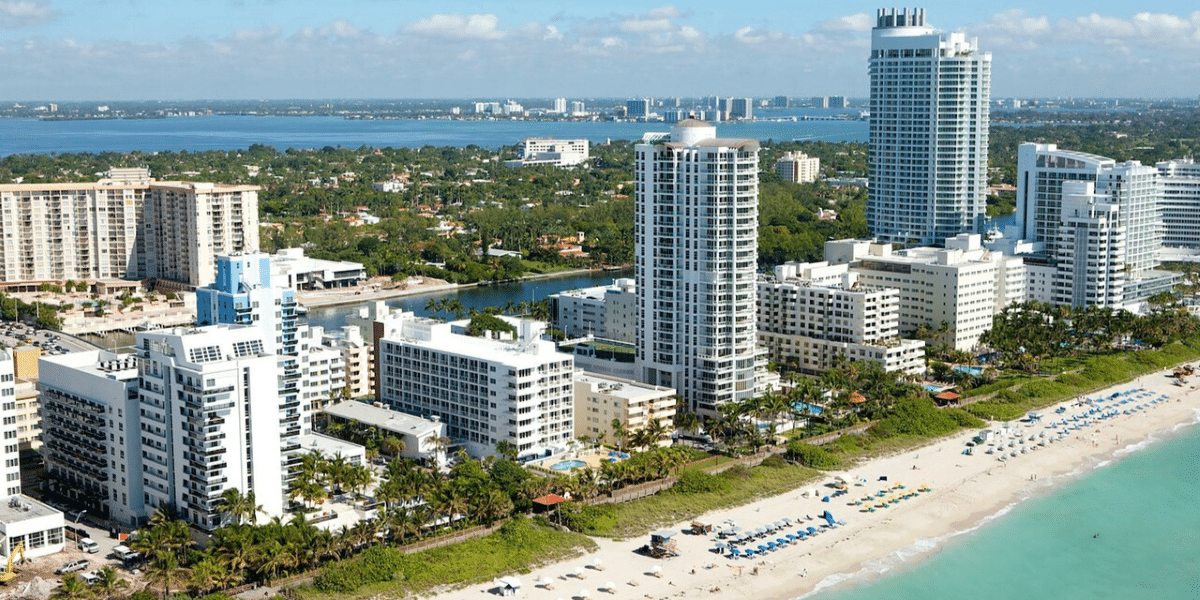Coral Reefs: The Rainforests of the Sea
Coral reefs may resemble underwater gardens, but they’re actually colonies of tiny living organisms called polyps. These polyps secrete a calcium carbonate skeleton, slowly building the intricate reef structures that provide a critical habitat for countless marine species. Think of them as the rainforests of the sea, teeming with biodiversity and crucial to the health of the entire ocean ecosystem.
“Coral reefs are not just beautiful; they’re essential,” explains a marine biologist. “They provide food and shelter for fish, protect coastlines from erosion, and even contribute to tourism economies.”
It’s heartbreaking to think that Miami’s dazzling turquoise waters and vibrant coral reefs might one day be just a fading memory. Unfortunately, the coral faces a one-two punch from both climate change and direct human impact.
The biggest culprit? Warming oceans. When ocean temperatures rise even slightly, it throws a major wrench into the symbiotic relationship corals have with microscopic algae that live within them. This colorful algae provides the corals with essential nutrients, but heat-stressed corals expel the algae in a desperate bid for survival. This is coral bleaching. It doesn’t kill the coral outright, but leaves it starkly white, weakened, and far more susceptible to disease and death.
As if climate change wasn’t enough trouble, coral reefs in heavily populated areas like Miami face additional threats. Pollution from fertilizer runoff, sewage that hasn’t been adequately treated, and chemicals from boat traffic degrades the water quality. Healthy coral needs crystal-clear, unpolluted water to thrive. Add to that the physical damage from careless boaters dropping anchors directly onto reefs, or divers who break off pieces of coral, and it’s easy to see why coral reefs are struggling. “Coral reefs are remarkably resilient, but they have their limits,” explains a marine conservationist. “The combined pressures of climate change and human-caused damage are pushing them beyond their breaking point.”
While the challenges facing coral reefs are immense, there’s hope. Scientists, conservationists, and concerned citizens refuse to sit idly by. Here’s a look at some of the critical conservation efforts underway to protect Miami’s reefs:
The tireless work of monitoring and restoration is crucial. Marine biologists keep a close eye on the health of the existing reefs, tracking coral bleaching events, disease outbreaks, and the impact of storms. They might even take fragments from healthy corals and transplant them to degraded areas in an attempt to kickstart reef recovery. “Monitoring allows us to understand the problems, while restoration gives us a way to actively combat them,” explains a marine biologist involved in these efforts.
Artificial reefs offer an intriguing solution. By sinking recycled materials, like decommissioned ships, concrete structures, and even old subway cars, marine biologists create new underwater structures that can become hotspots for marine life. These artificial reefs attract fish and other creatures, taking some of the pressure off the struggling natural reefs, and provide new opportunities for divers and snorkelers to explore.
Perhaps the most powerful tool in the coral reef conservation arsenal is education. Teaching the public about the beauty, fragility, and importance of coral reefs inspires people to be part of the solution. Encouraging boaters to use mooring buoys instead of dropping anchors, supporting businesses that prioritize sustainability, and minimizing individual pollution all contribute to protecting these valuable marine ecosystems. “The fate of Miami’s reefs isn’t just in the hands of scientists,” remarks a conservation outreach specialist. “It requires public awareness and a collective commitment to change.”
Miami: A Leader in Coral Conservation?
Miami has a unique opportunity to become a leader in coral reef conservation. Here’s how:
- Stricter Environmental Regulations: Implementing stricter regulations on coastal development, pollution control, and responsible boating practices can significantly reduce the human impact on reefs.
- Investing in Research & Restoration: Increased funding for coral reef research and restoration initiatives can accelerate the development of innovative solutions for reef protection.
- Promoting Sustainable Tourism: Educating tourists about the fragility of the reef ecosystem and encouraging responsible tourism practices can help minimize damage.
“Miami thrives on its connection to the ocean,” says a local advocate for coral reef conservation. “By taking a proactive stance on protecting our reefs, we’re not just safeguarding marine life; we’re safeguarding our own future.”
Protecting Miami’s coral reefs requires a collective effort. Citizens, local businesses, government agencies, and scientists all have a role to play. By working together, we can ensure that future generations can still experience the magic of Miami’s underwater paradise.









